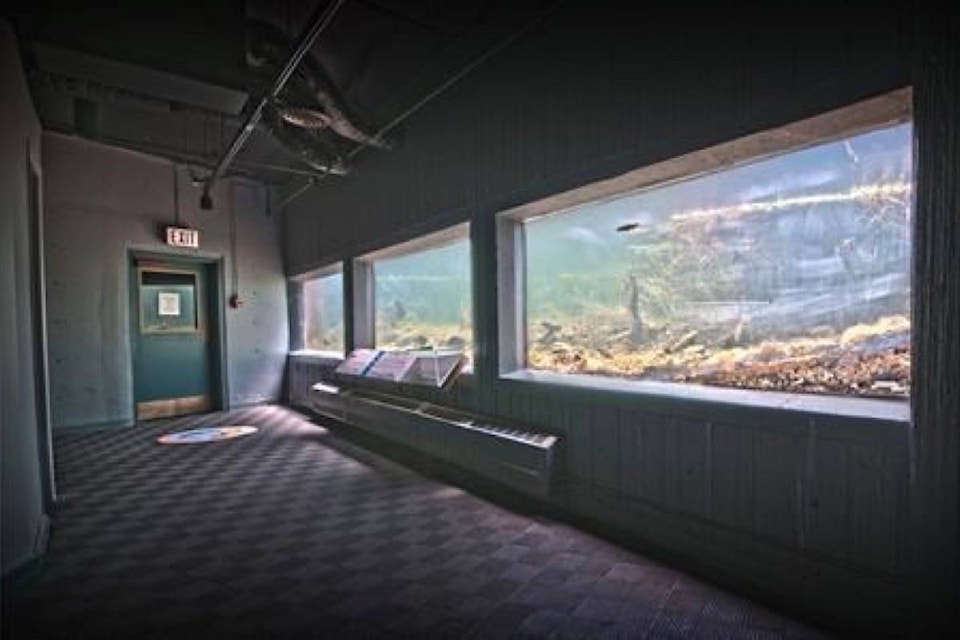ST. JOHN’S, N.L. — A mixed-media artwork by the late Mary Pratt, one of Canada’s finest still-life painters, was auctioned off for $13,000 Tuesday night in Toronto to support a unique but financially troubled institution in eastern Newfoundland known as the Fluvarium.
The non-profit centre, which opened almost 30 years ago, features nine large windows that offer stunning underwater views of a small river that meanders through the north end of St. John’s, N.L.
The name Fluvarium, derived from the Latin word for flowing water, literally means “windows on a stream.”
John Perlin, the centre’s chairman emeritus, says Suncor Energy’s decision last year to cut $60,000 in annual funding for education programs has left the freshwater ecology centre scrambling to find money to pay its small staff.
“It came as a bit of a blow when they said suddenly, ‘No, there’s no money. Period,’ “ Perlin said in an interview Tuesday.
“We’ve been trying to bridge the gap ever since, and it’s finally caught up with us.”
Up to 12,000 children visit the Fluvarium every year. The money from Suncor was mainly used to cover transportation and admission costs for schoolchildren who would not have been able to afford visiting the centre.
Perlin says he’s received word that the company may be reconsidering its decision.
In an emailed statement, Suncor spokesman Paul Newmarch said the company is “exploring any potential future opportunities for investment in the local community that aligns with our community investment strategy, which could potentially include the Fluvarium, but no decisions have been made at this time.”
Suncor, which is active in oil exploration and production on the east coast, paid $500,000 for naming rights at the Fluvarium about 10 years ago, but that agreement ended last year, Perlin said.
Pratt’s unusual artwork, known as “Bonfire,” was expected to fetch between $8,000 and $12,000 at the auction by Consignor Canadian Fine Art in Toronto.
The bold painting, which is primarily pastels mixed with other media, shows a roaring fire against the deep blue of a night sky, a shower of yellow-red sparks and flames erupting beyond the edge of the frame.
Pratt, who was originally from St. John’s and died last August, was quoted as saying the fire in the painting ”had to be alive.”
According to the auction house, the piece ”embodies diverse connotations of apocalypse, ritual, sacrifice and cleansing liberation through the radiating flames.”
Sarah Fillmore, chief curator at the Art Gallery of Nova Scotia, described Pratt as ”an incredible force.”
“She is one of names that people know,” Fillmore said in an interview. “And there aren’t a lot of artists who are household names. She’s a star …. She has a great place in art history.”
Pratt’s paintings typically deal with still-life images of domestic life, but the stunning, almost stark realism she brought to simple, everyday objects created what one critic has described as a “sense of wonder and occasional unease.”
The paintings for which she is best known stand in contrast to the raw energy and turbulent movement in “Bonfire.”
“During her lifetime, she was well-recognized, but as time goes on we’re going to see how see continues to resonate across time,” Fillmore said.
Describing her own work as a “realist painter,” Pratt once said: “My only strength is finding something where most people would find nothing.”
Newfoundland Power donated “Bonfire” to the Fluvarium years ago. It was on prominent display at the centre, but it was eventually taken down after wedding parties renting the venue complained that it set the wrong tone as a backdrop.
